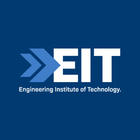This professional development course is designed for engineers and technicians who need to understand how to identify, prevent, and troubleshoot industrial data communications problems.Course BenefitsYou may be eligible to claim CPD points through your local engineering association.Receive a Certificate of Completion from EIT.Learn from well-known faculty and industry experts from around the globe.Flexibility of attending anytime from anywhere, even when you are working full-time.Interact with industry experts during the webinars and get the latest updatesannouncements on the subject.Experience a global learning with students from various backgrounds and experience which is a great networking opportunity.Get in-depth knowledge on various technologies, hardware standards and protocol related to Industrial Data Communication.Understand the operations of various technologies and the participation of equipment’s and the troubleshooting of RS-485 and Ethernet type networks.Study the core aspects of Industrial Data Communication like industrial ethernet, TCPIP internet layer protocols, fieldbuses, Modbus, OPC and network security.Course DetailsModern industrial control and information systems employ a proliferation of technologies, including various hardware standards and protocols. For many of the personnel working with these systems, the technologies are ‘plug and play’ and are just there to be used. The problems arise when decisions have to be made regarding the most suitable technologies for a given application, or when things go wrong, and troubleshooting has to be performed. Without a thorough grasp of the working of the technologies involved, and without the availability of (and the ability to use) suitable diagnostic tools, this becomes a formidable challenge.The world of industrial communications abounds with three-letter acronyms, protocols, layered communication systems, fieldbuses, and device networks. There are numerous networking and industrial bus standards, synchronous and asynchronous protocols, baseband and broadband systems, bus and star topologies, connection-oriented, and connectionless protocols. In addition, there is a pronounced migration towards the use of Ethernet and TCPIP.This program demystifies the jargon and places the most popular systems, technologies, hardware standards, and protocols in an Open Systems Interconnection (OSI) perspective. It explains how these technologies operate, and equips participants with the tools and skills to do basic hardware and protocol-related troubleshooting on both serial (RS-485) and Ethernet type networks.






